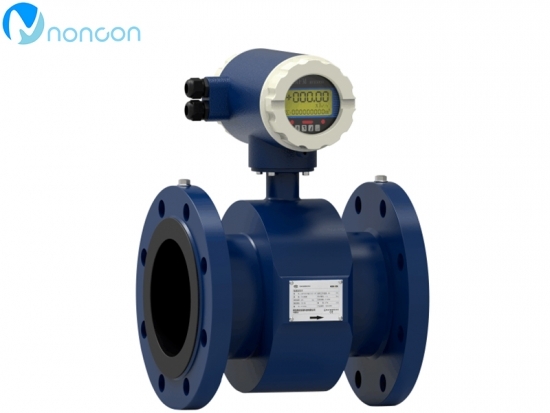
Blog Categories
Recent Posts
How to choose electromagnetic flowmeter correctly in 5 Steps
1. Electromagnetic flowmeters are widely used to measure essentially electrically conductive liquids.Conductivity is simply the ability of a liquid to conduct electricity.The electromagnetic flowmeter can easily measure liquids with a small conductivity of 10 S/ cm.Generally, electromagnetic flowmeters can measure conductive water, waste water, mud, acid, alkali, juice, pulp and so on.PH also plays an important role here.A pH of less than 7 indicates that the application is acidic.The chemical compatibility of liquids becomes the basis for selecting suitable electrodes and lining materials for flowmeters suitable for specific applications.Therefore, if the application is a conducting liquid, the electromagnetic flowmeter can be used with certainty.They * are suitable for applications in grout which cannot be measured by many other types of flow meters.In addition, electromagnetic flowmeters cannot be used to measure hydrocarbons and gases
2. Process parameters, including working temperature, pressure and speed.Temperature is an important parameter that must be known because the selection of the lining plate is based on this information.The bushing of the electromagnetic flowmeter provides insulation and is resistant to corrosion and wear.Select the appropriate liner according to the rated temperature.For example, a hard rubber lining may be used for operating temperatures up to 50 ° C, while PTFE(teflon) is recommended for high temperature ratings up to 120 ° C.Available linings are hard rubber, PTFE, neoprene, polyurethane, PFA, etc.Pressure rating is required to select flange standard.In order to determine the size of the flowmeter, the velocity of the liquid and the small and large flow rates should also be mentioned.This dimensional flowmeter will provide the required accuracy and better results 3. What outputs the flowmeter needs.The widely used industrial output is 4-20 mA analog current output.The output of 4-20 mA is proportional to the flow of the liquid, which can be further transferred to the PLC for control.To know the volume of the liquid, you can choose the digital output, which is the pulse output.For example, a flowmeter generates a pulse for every five liters of liquid that flows through a pipe.If the total number of pulses recorded in one second is 10, we can easily calculate the flow as (10 pulses x 5 litres)= 50 litres/second.It can be easily converted to standard engineering units, such as m3 / HR and gallon/min.Batching and metering applications usually require an output pulse from the flowmeter.Other commonly used outputs include rS-485 and RS-232 for serial communication.
Compared to the RS-232, the RS-485 has a longer communication distance and is able to connect to multiple nodes (or simply devices), so the RS-485 is now more popular and popular.Typically, applications that require billing for liquids are used for RS-232 and RS-485 communications.In addition, GSM and GPRS communications are also popular for SCADA and automation purposes.If someone needs measurement and real-time data for a particular application, but the site is located in a remote area, GSM or GPRS technology can be used.These technologies allow the flow meter data to be sent to the user's phone via SMS or email using 2G, 3G or 4G networks.However, these are application based and are entirely dependent on user requirements.
4. Power requirements.To supply power to the flowmeter on site, the availability of power must be checked.If the application requires the flowmeter to be installed in a remote area where power is unavailable, you can always choose the battery option.The battery-powered electromagnetic flowmeter can easily meet the power requirements, and the typical service life of the battery is 5-10 years according to the manufacturer's specifications.If a power supply is available, a 24V DC or a 230V AC power supply can be used, depending on the particular application.
5, the last is the cost, which is also a large standard for the choice of flow meter, and for many users, performance is very important.You must know that you must pay for the flowmeter in order to obtain accurate liquid flow measurements.To this end, the meter should be selected with good accuracy and reliability so that people can get the price paid.Also, no one likes flowmeters that require constant maintenance.The electromagnetic flowmeter does not contain any moving parts and requires little maintenance.It is usually used in any size of pipeline, high accuracy and no pressure loss.Keep in mind that for applications where accuracy is important (ranging from 0.2% to 0.5%), you can be sure to use electromagnetic flowmeters rather than other types of flowmeters.
Related products: electromagnetic water meter, liquid turbine flow meter


